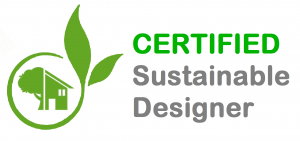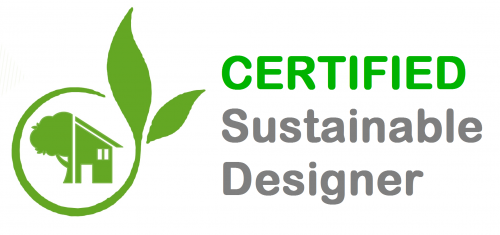Green Building Design
In the face of climate change and growing environmental concerns, the field of architecture and construction is witnessing a profound shift towards sustainable building design. Sustainable architecture goes beyond aesthetics, focusing on creating structures that are environmentally responsible, resource-efficient, and provide healthier living spaces.
-
Energy Efficiency and Passive Design:
Principle: Design for Energy Conservation
Benefits:
- Sustainable building design prioritizes energy efficiency to reduce the environmental impact of buildings throughout their lifecycle.
- Passive Design: Incorporate passive design strategies such as proper orientation, maximizing natural daylight, and optimizing ventilation to reduce reliance on mechanical heating and cooling systems.
- High-Performance Insulation: Use advanced insulation materials to minimize heat transfer and ensure optimal thermal comfort.
- Energy-Efficient Lighting: Implement energy-efficient lighting solutions, such as LED fixtures and natural lighting, to reduce electricity consumption.
- Reduced energy consumption lowers greenhouse gas emissions and lessens the reliance on non-renewable energy sources.
- Lower utility bills for occupants, contributing to long-term cost savings.
-
Sustainable Materials and Life Cycle Assessment:
Principle: Choose Environmentally Friendly Materials
Benefits:
- Sustainable building design places a strong emphasis on selecting materials with minimal environmental impact.
- Recycled and Recyclable Materials: Prioritize materials made from recycled content and those that can be recycled at the end of their life.
- Locally Sourced Materials: Choose materials sourced locally to reduce transportation-related energy consumption.
- Life Cycle Assessment (LCA): Evaluate the environmental impact of materials from extraction and production to transportation, use, and disposal.
- Minimized resource depletion and waste generation.
- Promotes a circular economy by encouraging the reuse and recycling of materials.
-
Water Efficiency and Sustainable Landscaping:
Principle: Conserve Water Resources
Benefits:
- Sustainable building design integrates water-efficient systems and landscaping practices to minimize water consumption.
- Low-Flow Fixtures: Install low-flow faucets, showers, and toilets to reduce water usage.
- Greywater Systems: Implement systems that capture and treat greywater (non-potable water from sinks, showers, etc.) for reuse in irrigation.
- Drought-Tolerant Landscaping: Design landscapes with native and drought-tolerant plants that require minimal irrigation.
- Reduced strain on local water supplies.
- Lower water bills for occupants and communities.
-
Waste Reduction and Circular Design:
Principle: Minimize Construction and Operational Waste
Benefits:
- Sustainable building design aims to minimize waste generation during construction and encourages circular design principles.
- Construction Waste Management: Implement strategies for sorting, recycling, and reusing construction waste.
- Deconstruction Instead of Demolition: Prioritize deconstruction over demolition to salvage reusable materials.
- Upcycling and Reuse: Incorporate reclaimed materials and components into the design to extend their life cycle.
- Reduction of landfill waste and associated environmental impacts.
- Encourages a shift towards a circular economy within the construction industry.
-
Biophilic Design and Connection to Nature:
Principle: Foster a Connection Between People and Nature
Benefits:
- Biophilic design integrates natural elements into the built environment, promoting well-being and connection to the natural world.
- Natural Light and Ventilation: Prioritize spaces with ample natural light and ventilation.
- Indoor Plants and Green Spaces: Integrate indoor plants, green walls, and outdoor spaces within the building design.
- Natural Materials: Use materials that evoke a sense of nature, such as wood and stone.
- Improved occupant health and well-being.
- Increased productivity and reduced stress among occupants.
-
Adaptive Reuse and Flexibility:
Principle: Design for Longevity and Adaptability
Benefits:
- Sustainable building design considers the adaptability of spaces over time, reducing the need for demolition and reconstruction.
- Adaptive Reuse: Repurpose existing structures for new functions, reducing the demand for new construction.
- Flexible Design: Plan spaces that can be easily adapted to accommodate changing needs or technologies.
- Modular Construction: Utilize modular construction methods to allow for future modifications.
- Preservation of cultural and historic value in existing structures.
- Reduced embodied energy associated with new construction.
-
Renewable Energy Integration:
Principle: Harness Clean, Renewable Energy Sources
Benefits:
- Sustainable building design seeks to integrate renewable energy systems to power buildings with clean and sustainable sources.
- Solar Photovoltaic Panels: Install solar panels on roofs or facades to generate electricity.
- Wind Turbines: In suitable locations, consider small-scale wind turbines for on-site power generation.
- Geothermal Systems: Utilize geothermal heat pumps for efficient heating and cooling.
- Reduced reliance on fossil fuels and lower carbon footprint.
- Long-term energy cost savings for building owners.
-
Resilient Design and Climate Responsiveness:
Principle: Design for Changing Climate Conditions
Benefits:
- Sustainable building design anticipates and adapts to the impacts of climate change, ensuring resilience and longevity.
- Climate-Responsive Design: Design buildings that respond to local climate conditions for optimal thermal comfort.
- Flood-Resistant Construction: Elevate structures in flood-prone areas or use materials resistant to water damage.
- Green Infrastructure: Integrate green roofs, permeable surfaces, and natural drainage systems to manage stormwater and reduce flooding risks.
- Enhanced building durability in the face of extreme weather events.
- Reduced vulnerability to climate-related risks.
Sustainable building design principles offer a comprehensive approach to creating structures that not only meet the needs of the present but also contribute positively to the future. By integrating energy efficiency, sustainable materials, water conservation, waste reduction, and biophilic elements, architects and designers can create buildings that promote environmental responsibility, occupant well-being, and long-term resilience. As the construction industry continues to evolve, the adoption of these principles becomes essential for building a sustainable and harmonious relationship between the built environment and the natural world.










